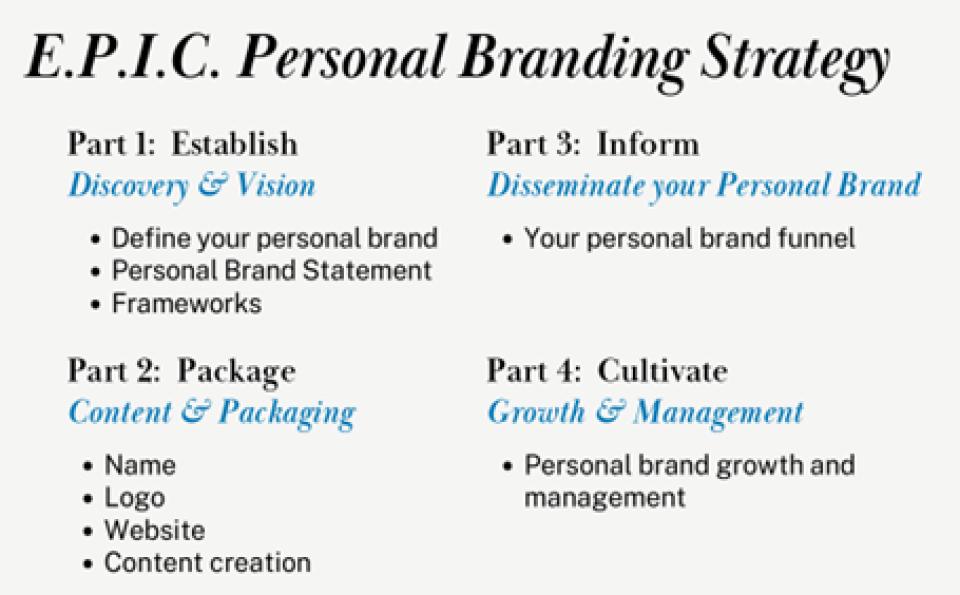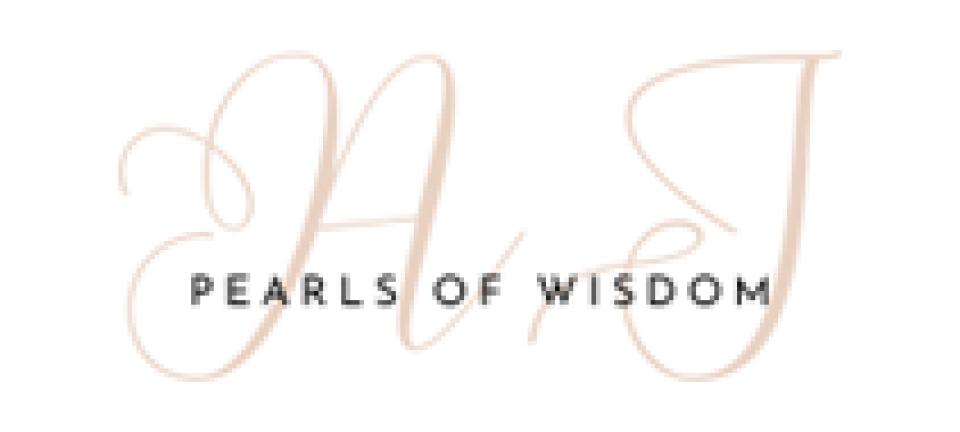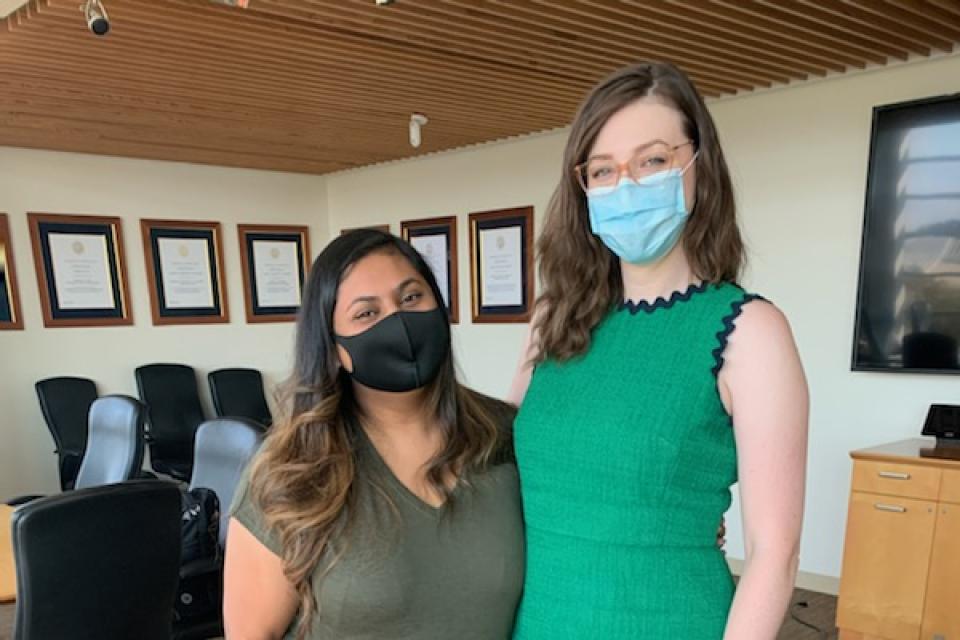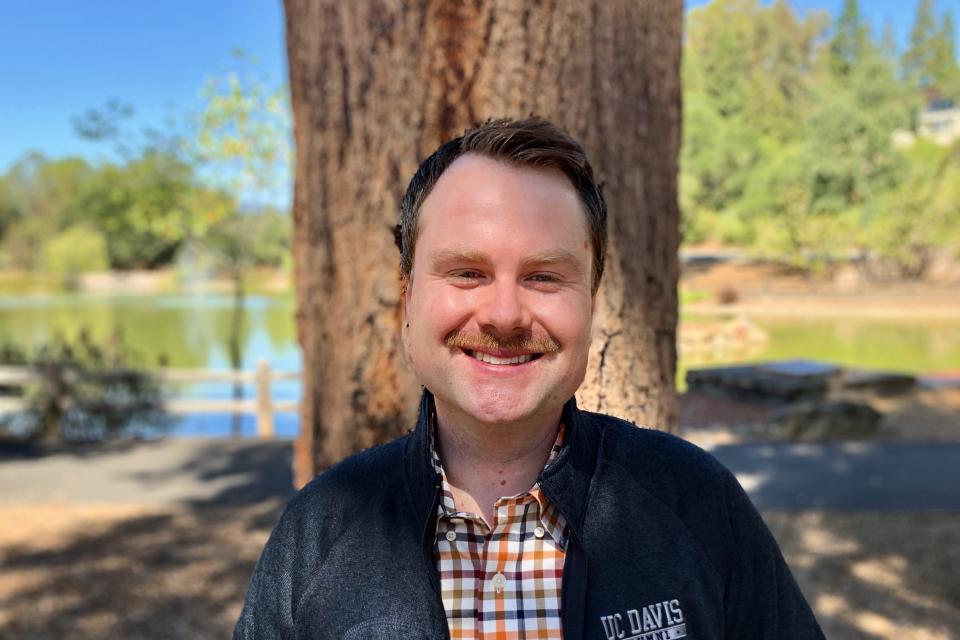Boost Your Personal Brand: Four Effective Strategies for a Career Change
Following the E.P.I.C. Personal Branding Strategy

You might be considering an MBA…and perhaps you are considering a career change like me?
Before coming to UC Davis, I was previously a high school chemistry teacher. As a first-year MBA, I’m now pursuing a program coordination role in the emerging women’s healthcare field.
If you can relate, you understand the challenge of reshaping your personal brand during a professional transition.
I recently attended award-winning Lecturer Vanessa Errecarte’s workshop, “Make your Mark: Creating an E.P.I.C. Personal Brand.” This was part of the Career Development Lunch and Learn Series at the Graduate School of Management.
Her workshop focused on using the cornerstone principles of both corporate branding and content and digital marketing to create and define your personal brand in four phases: Establish, Package, Inform and Cultivate (E.P.I.C.).

Four Steps to Building Your Personal Brand
1. Establish Your Specific Audience
You know how the old saying goes…“beggars can’t be choosers.” Well, while the concept might hold true on a technical level, it certainly won’t serve you when you are trying to create a persuasive pitch to an employer or potential customer. Using Errecarte’s trademarked E.P.I.C framework, it is critical for you to get choosy and establish a clear statement of your brand. The format goes as the following:
“I (do what) for/that (customer base) because (value proposition)”
For me, this currently looks like the following statement:
“I engage in the rigorous process to curate the necessary information for women seeking attainable health solutions by developing a curriculum that effectively educates because achieving health starts with providing accessible and actionable information.”
The clearer you are about who you want to serve, the stronger your personal brand will resonate with others. This will take a lot of discussion and several rewrites. For example, I may narrow down the type of women in my audience, which will allow me to get more specific in the content I provide. This was another important takeaway I gained from the workshop.
Your target audience drives your content rather than the reverse, which is a mistake often made in marketing.
2. Package Your Brand
Once you have a personal brand statement, make it public. In fact, make your whole name public (middle name not required).
Package your new brand with a visual and accessible platform for others to engage.
Not a website-building whiz or coding master? Don’t worry. Free platforms like WordPress and Canva offer easy templates to make attractive landing pages for you to share your knowledge and unique value. The logo is recommended to include your name and should fit the ethos of your brand.

Want a beginner example of a website? Check out my site. I’ll be posting this blog under my portfolio page.
The point in developing a website is that social media is simply borrowed space online.
If your primary social media platform went out of business overnight, you’d lose your audience. However, by building a website with the ability for people who find you on social media to opt-in, you begin to have the potential to own instead of rent your audience. In business and in life, that’s always a better place to be.
3. Inform Your Audience
Now that you have a brand statement and a cool-looking website with your logo, next up is populating that platform with the evidence of your brand. This is the inform stage.
Start by choosing a media form you are most comfortable with (either written or video). I am a chatty person, so I like blog posts best. However, if you are already a TikTok star-to-be, take that and record a three-minute informational video.
A helpful hint I learned in the workshop that could be twice as effective is recording a face-to-camera video and transcribing it to have both a video and written blog post to put on your website.
Got information paralysis? Practice structuring all your informational pieces with a simple framework of two or three takeaways that will help with search engine optimization (SEO). Notice my title for this article, (wink wink).
4. Cultivate Your Brand through Consistency
Once you create your first post or video, keep it going. This is called cultivating. Try to post once every two weeks and then bump it up to once a week.
Consistency is key so be like the tortoise and take it steady. Once you establish a rhythm, develop an invitation for viewers to receive email updates. Those emails are going to be the gold at the end of your branding rainbow.
Instead of giving all of your information away on social media, give your audience just enough so that they go to your website to read your blog or vlog post.
Social media is for discovery. Websites, email marketing, and texting are for engaging and building relationships with your audience.
Building Your Personal Brand
Don’t disregard the value of publicizing your personal brand. Whether you are a career changer like me or a seasoned expert in your field, your personal brand is a powerful expression of who you are and why others should listen.
If presented boldly and genuinely, it will allow you to reach audiences that share the same values and truly have a meaningful impact on others’ lives, if not the very least your own. After all, your next hiring manager might notice all the help you’re providing to people in your industry and call YOU for the next job rather than the other way around.
In marketing, that’s called pull marketing, and it works for the career search too.
You can also go to my website and send me a message.
According to Errecarte, we spend over eight hours a day on social media, texting, or emailing. With over half of our waking hours spent in this alternate place, why wouldn’t we want to own some online real estate, and show people who we are rather than risking that they will decide for themselves who we are?
The workshop wrapped up with ideas for potential monetization. That made me start wondering if I would write an eBook or offer workshops someday. While most of us will ultimately use personal branding to gain traction in our careers for now, it was inspiring to see that the sky really is the limit.
I can’t wait to hear about the ideas this blog post may have given to you. Will you try to start a personal brand? If you would like to connect further, feel free to reach out to me on LinkedIn.


